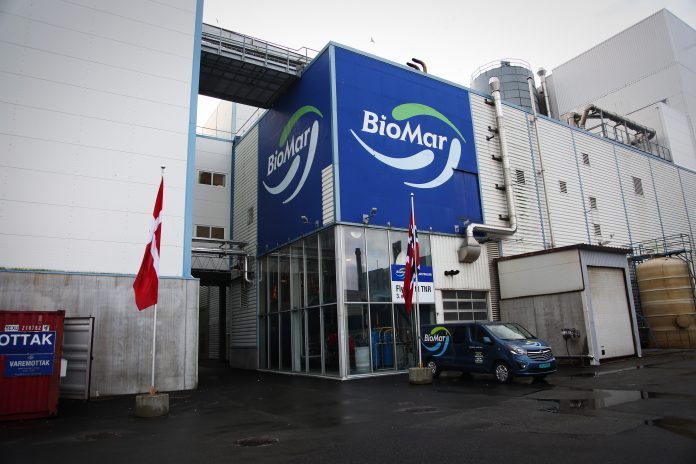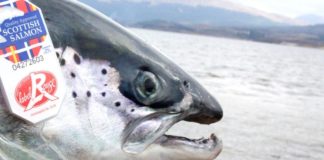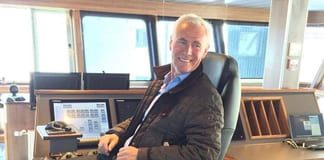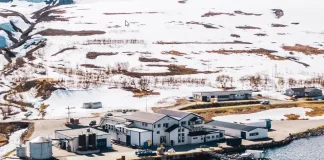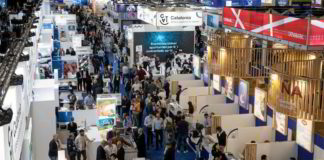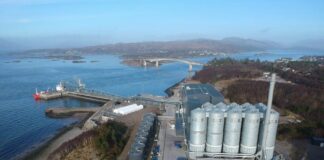By the time Chilean Ventisqueros launched its Silverside brand of Pacific salmon in the U.S. in October 2017, the fish had been eating AlgaPrime feed for “maybe six months,” ventured BioMar sustainability director, Vidar Gundersen.
The Silverside brand is a marketing effort to sell a high-yield fish that requires far less than one kilogram of wild fish to produce a kilogram of farmed fish. Ventisqueros — which farms and sells Atlantic, Coho and sea trout to the U.S. market — is upping its production in 2017 by 10,000 tonnes to 40,000 t of salmon, and an unconfirmed part of the new tonnage now look to be Coho (Ventisqueros could not confirm at press time).
“Once you produce a kilogram of farmed fish by using less than a kilogram of wild fish, you become a net biomass producer,” Gundersen said, echoing a popular refrain for feed makers. For Ventisqueros, the low ratio of wild to farmed is key to selling Silverside as sustainable.
“It seems they already see the Silverside as a success, since it’s being sold in the U.S. market,” Gundersen offered. It’s a success for BioMar, too, since their AlgaPrime feed is being used to differentiate Silverside in the market. No other Coho have yet used it, and a deal is understood to be in place for Ventisqueros alone.
That could change, as Coho-farming is on the march worldwide. The Coho is a faster-growing fish than the Atlantic, but it’s only available seasonally.

Canadian company Northern Divine Aquafarms employs direct sales of its brood Coho caviar to growers and restaurants in the U.S. and Canada. The Coho ova come from its business, Target Marine, and the relationship make its own wild-to-farmed ratio “0:1”, as all of its farmed Coho derive from an original brood and nursery fish, so no wild fish.
“Not using wild fish is also possible, but why would you do that,” Gundersen asked rhetorically, adding that you still would want “some part of the (wild) fish” in the farmed fish’s composition. He said that, “theoretically”, you can get a forage-fish dependency ratio of 0:1 using AlgaPrime, and you could do it by using the limited resources of fish cuttings from the wild.
“AlgaPrime is the first alternative Omega 3 source that we’ve had,” Gundersen said, referring to some of fish-farming’s giants already using the feed for Atlantic salmon.
For the salmon-farmer, it’s the Coho’s genetics that make it a very fast-growing fish, Gundersen said, adding, “But given the right nutritional requirements, it can be made to grow a little faster.” Interestingly, the AlgaPrime feed supplies Coho and all farmed salmon with Omega 3 fatty acids via microalgae as well as colorant that help the fish achieve its famous color.
“(Silverside) brand success could mean that others maybe will increase their focus on Coho,” he said, although the AlgaPrime is also a feed for BioMar’s Atlantic salmon customers.

